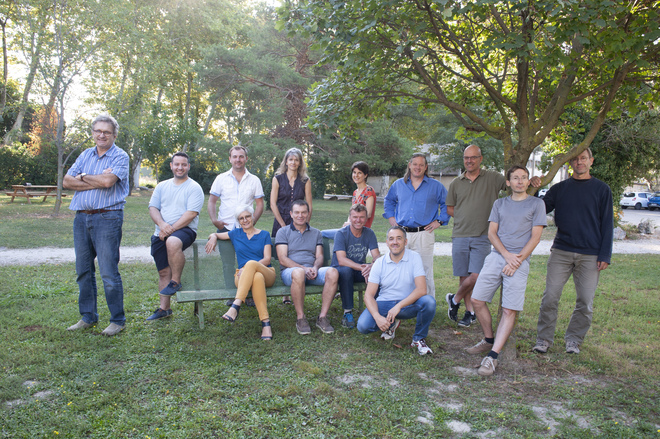
Agroecology Reading time 7 min
Dominique Ripoche: a model of generosity
Published on 10 December 2018
With its holiday souvenirs, figurines and drawings from her grandchildren, Dominique Ripoche’s desk is like a second home, where she has worked since 1982. “At the outset, I didn’t intend to work in agronomy at all!” she says. “I sat the exam for the Banque de France (France’s central bank) after finishing my degree in statistics in Grenoble. Around the same time, I had an interview with Bernard Seguin, who was ‘Mr Climate Change’ at INRA. I got hired, and that’s how I ended up here!” Dominique began her career by developing climate data processing tools and crop modelling on DSSAT, a software programme developed in the United States. “Then Nadine Brisson, the brainchild of STICS, arrived with her model, and we began working on it together.”
A tool for contributing, sharing and exchanging
De-bugging sessions become an occasion for laughter and memorable exchanges
The model is capable of simulating an agrosystem while taking into account climate factors and crop practices, with the aim of moving towards more sustainable farming and improving how water and nitrogen are used in agriculture. The first version, released in 1996, was for wheat, and later, maize. “I can still see Nadine and I on our way to present the model, carrying our papers and floppy disks! What great memories,” says Dominique. Today, her work focuses on three major areas: ongoing maintenance and updating of the computer code, publishing STICS-related news and documentation, and user support. In sum, she guarantees the reliability and robustness of the model. In the interest of continually improving the model, she studies the needs of those who use it: scientists, economists, professors and researchers. “Exchanging with people, working as a team with colleagues, users and PhD students, is what I like the most: it allows me to meet wonderful people.”
Guardian of the code
Two became three when Bruno Mary brought some fertiliser to the STICS garden, and later the team working closely on the model grew to four with the arrival of Marie Launay. There are now 24 people on the STICS project team (the ‘EPS’). “Researchers, engineers, computer scientists, numerical analysts – everyone brings their expertise. And I'm not the only computer scientist anymore! Operating as a project team has made it possible to professionalise code management,” says Dominique, contented. Computer scientist and colleague Patrice Lecharpentier joined the unit two years ago to gradually optimise the code and integrate more modularity. STICS is an excellent showcase for INRA, especially given the model’s international success: it is used the world over, and joint projects with other countries like Brazil, India and China are becoming more common.
The life lines in lines of code
Dominique guarantees the reliability and robustness of the model
“You feel a bit like Sherlock Holmes when you have to find a problem in the code,” says Dominique Ripoche of her navigation in the ocean of coding. With Dominique, long days and often fastidious de-bugging sessions become an occasion for laughter and memorable exchanges with colleagues. “We’re friends as well as colleagues,” she points out. The enjoyable atmosphere so tangible at AgroClim is found even in the programme’s lines of code. A birthday, a problem, a word of encouragement: a day in the life of the unit, according to STICS team members. And for Dominique, her award provides recognition for this cohesion: “I wasn't expecting it at all! But I'm thrilled: the award goes to STICS, Nadine and the entire team!”
What's next?
A passion for sharing
Version 9.0 of the STICS model was released mid-October 2018. In recent years, it has become one of the most frequently referenced models in the world. “We integrated the latest corrections, updates and scientific information on new formalisms. We’ve uploaded it to the web site, and have publicised the release of the latest version. We’ve been busy!” she explains, laughing. Next up on the to-do list? Dominique has one wish: “that use of the STICS model continues, and that the code lives on after I retire!”

Dominique Ripoche-Wachter was born in 1960. She has two children and four grandchildren.
Education
1979 – Secondary school diploma with a major in math and science
1981 – Post-secondary degree (DUT) in statistics and quantitative management techniques
Career
1982 – Dominique Ripoche is hired at INRA as a programmer, working part-time at the STEFCE laboratory and part-time in imagery and statistics processing at the Bioclimatology unit.
She remained at the Bioclimatology unit until 1996 as an analyst and programmer.
From 1996 until now, she has worked as the IT manager of the STICS project.
Hobbies
Knitting, which she says is like yoga; yoga (the real kind), speed walking with her colleagues, and exotic cooking.
